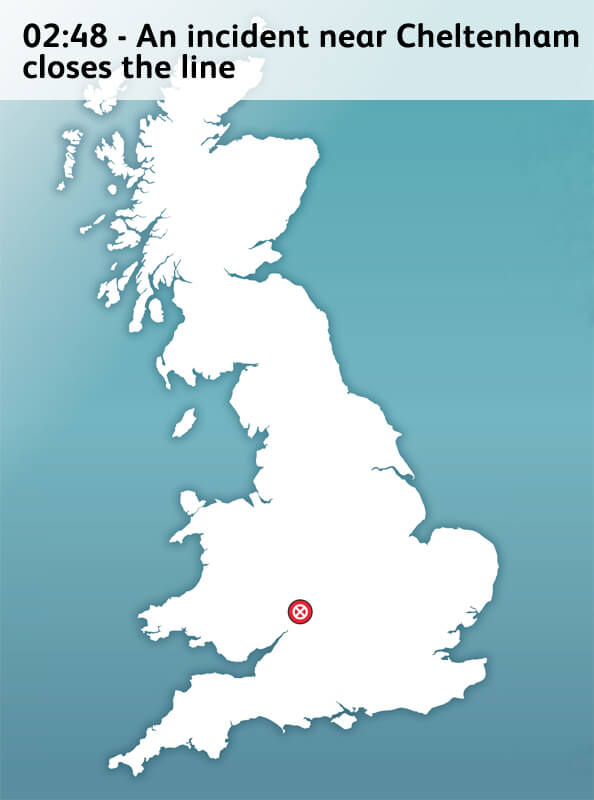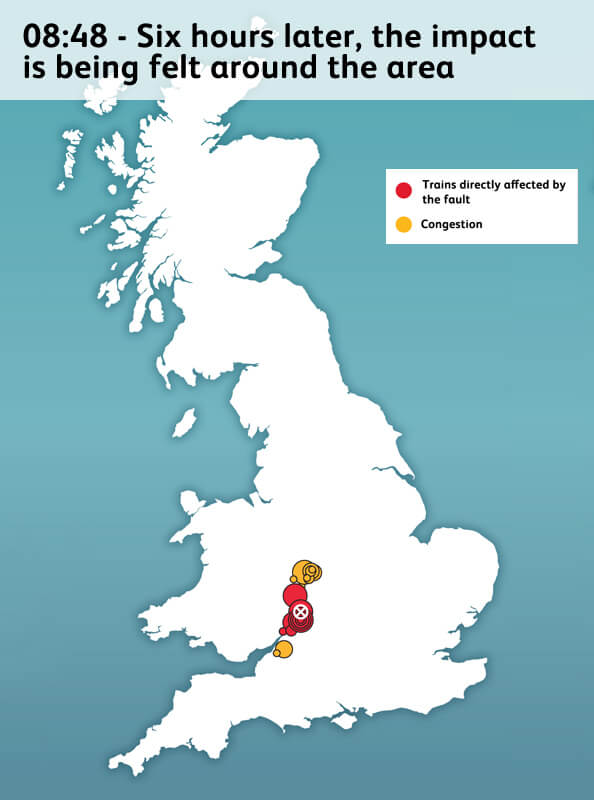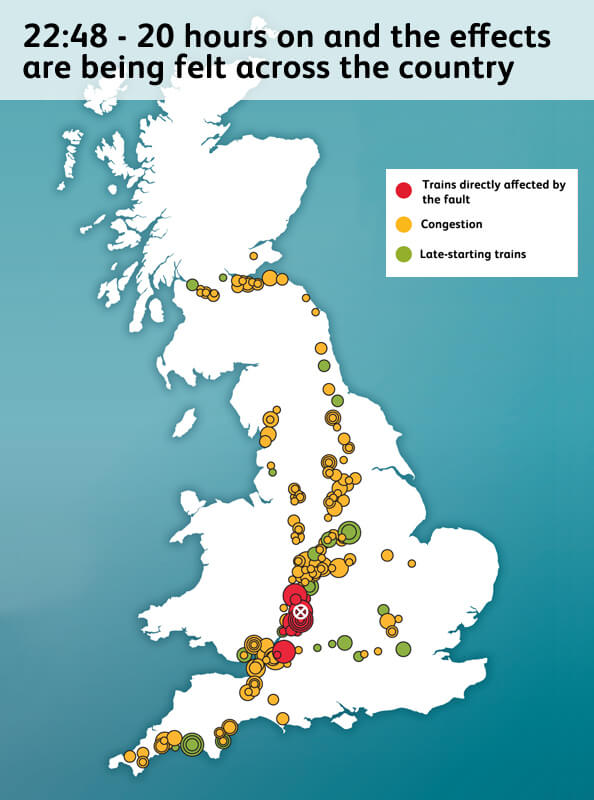Knock-on delays
How a delay to services in one area can affect trains elsewhere in the country.
What Are Knock-On Delays?
Knock-on delays occur when a problem in one part of the railway network causes delays in other areas. This can happen based on the issue’s location, the problem’s nature, and how busy the train services are. Most problems are fixed quickly and without disruption. However, some incidents can have a cascading effect, leading to delays elsewhere on the network.
How a Delay in One Area Can Affect Trains Elsewhere
Every day, thousands of passenger trains and freight trains use the rail network. At peak times, critical parts of the network now run at close to 100 per cent capacity. This means disruptions are more likely to cause knock-on delays because there’s no extra capacity to absorb the impact.
We resolve the majority of problems quickly, avoiding delays for passengers. However, on busy routes with tight schedules, even a simple blown fuse can cause knock-on delays that last for hours. As you can imagine, damage to overhead lines or a bridge can take considerably longer.
If congestion builds, these knock-on delays can affect both the route with the issue and any connecting routes as trains slow down to wait for other trains. This in turn can mean that trains, drivers and crews aren’t in the right place at the right time to run other services in the day’s timetable. Late arriving trains are also more difficult to get cleaned, checked and ready in time for their next journey.
How one local incident can affect the national rail network
A small incident, such as a vehicle hitting a bridge near Cheltenham, can have a national impact nearly a day later. Initially, the line near Cheltenham would be closed, causing immediate delays. Six hours later, train services across the network would still be affected, with congestion and delays spreading. Twenty hours after the incident, areas across the network would continue to experience delays, with trains directly affected, congestion, and late-starting trains.




What do we do to minimise knock-on delays?
The rail industry works together to achieve the best balance between getting trains back on schedule as safely and quickly as possible and minimising inconvenience for passengers. We have contingency plans in place with all the train companies so we can quickly alter timetables to get trains running back on time as soon as possible. Here are some of the actions we take:
- Cancel trains: We may cancel trains with fewer passengers or where there are alternative transport options, so that there is space on the tracks for delayed trains to complete their journey quickly.
- Adjust stops: We may miss out stops to make up time, or add stops to keep services moving and make sure we get everyone where they need to be – even if they are a little late getting there.
- Divert trains: If a line closes, we may have to divert trains onto different routes or lines.
- Shorten journeys: We may even stop short of a train’s final destination so we can carry out checks and cleaning faster to avoid further delay.
- Temporary cancellations: Sometimes, we may have to cancel all trains in the affected area for an hour. This is the quickest way to get trains running on time again.
These actions are particularly important on busy routes where it would take many hours to get all trains back on schedule otherwise.
Our commitment
We understand that delays are frustrating, and we always strive to avoid cancelling services if possible. We are committed to keeping you informed, minimising disruption, and ensuring you keep moving.